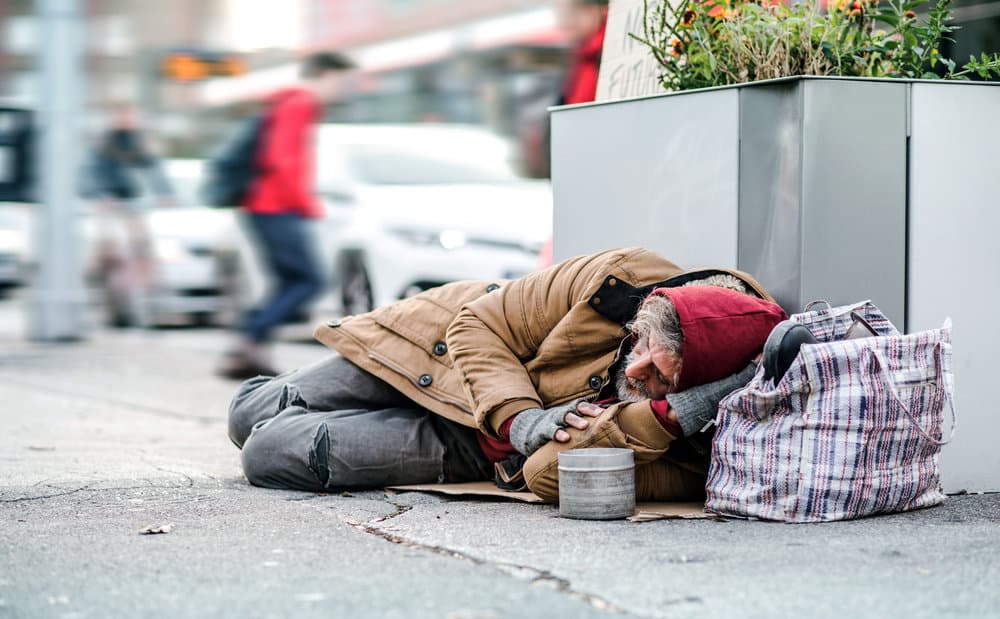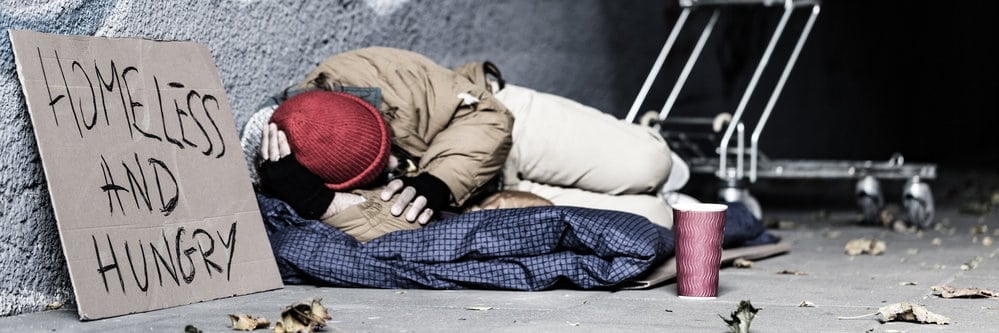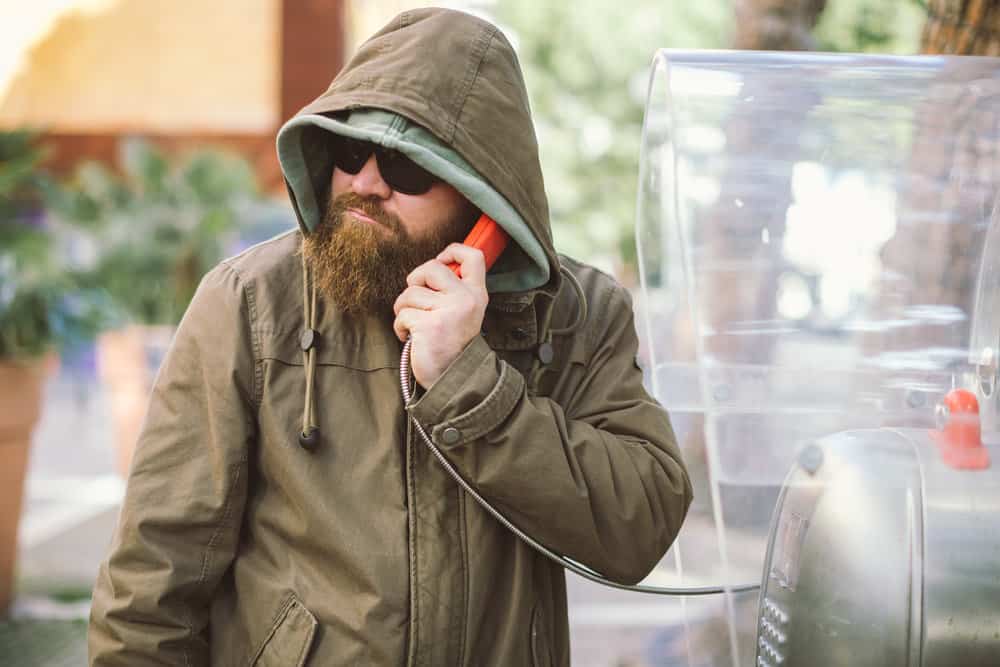Homelessness is a pressing issue that impacts countless individuals and families around the world. One of the most significant challenges faced by homeless people is finding a safe and comfortable place to sleep. Many of us may not have given much thought to where these individuals rest their heads at night, and understanding the various options available to them sheds light on the struggles and daily experiences they face.
A wide range of places serve as makeshift sleeping quarters for the homeless. While some individuals manage to find refuge in shelters or housing programs, many others are left to seek more unconventional sleeping arrangements. From parks and abandoned buildings to the homes of friends and family, the locations where homeless people sleep can underscore the harsh reality of life on the streets and the pressing need for increased support and assistance.
Key Takeaways
- Homeless individuals face challenges in finding safe places to sleep, with various options available to them.
- Shelters, housing programs, and unconventional sleeping places underscore the need for increased support.
- The daily experiences of homeless individuals reveal the harsh reality of life on the streets.
 Understanding Homelessness
Understanding Homelessness
Homelessness is a complex issue affecting millions of individuals, including an alarming number of people in America. First off, let’s examine the main types of homelessness. They are reversible, irreversible, chronic, episodic, transitional, and hidden. Familiarizing yourself with these types is essential to understanding the many reasons behind why people experience homelessness.
When it comes to finding a safe place to sleep, people experiencing homelessness face numerous challenges. Popular culture’s portrayal of homeless people sleeping under bridges or on pavements can be misleading. In reality, many homeless people seek out more secure locations for a good night’s rest.
These safe spots include living in a car, staying with friends or family, and accessing emergency shelters. Meal-serving facilities such as soup kitchens can also be valuable resources for finding temporary places to sleep.
Here’s a breakdown of some potential sleeping spots:
- Cars or vans: Gives a sense of privacy and security compared to exposed outdoor areas.
- Friends or family: Can offer temporary shelter and emotional support.
- Emergency shelters: Provide basic facilities and a roof over one’s head.
- Abandoned buildings: While unsafe and not recommended, some people resort to them out of desperation.
Despite the available options, it is crucial to remember that sleeping outdoors can pose significant risks. Many factors, like weather conditions and personal safety, can make it challenging for a homeless person to get a full, restful night of sleep. Additionally, constantly moving from one spot to another can be physically and emotionally draining.
Ultimately, homelessness is a multifaceted issue that requires empathy and understanding from society. By learning about its various forms and the difficulties faced by those experiencing it, you can better grasp the importance of supporting initiatives to address this growing crisis.
Shelters and Housing Options
When you are in a situation without a permanent home, several options can provide temporary solutions. This section discusses some of these possibilities, including homeless shelters, transitional homes, staying as a guest at a friend’s or family’s house, and government-assisted housing programs.
Homeless Shelters
Homeless shelters offer an immediate solution for individuals and families needing a safe, warm place to sleep. Organizations such as The Salvation Army and local shelters provide emergency accommodation for men, women, and children in dire circumstances. It’s important to contact these resources if you require urgent assistance. They can offer temporary lodging, bedding, meals, and personal hygiene facilities.
Transitional Homes
Transitional homes, sometimes referred to as halfway houses, offer temporary housing for people in need of a more stable place to stay. These homes can be beneficial for individuals recovering from substance abuse issues or facing other life challenges. Transitional housing facilities offer support services such as counseling, job placement, and education programs to help residents achieve self-sufficiency and ultimately transition to permanent housing. These homes tend to have strict rules and deadlines for residents, but they can provide structured and empowering environments during times of need.
Invited Guest at a Friend’s or Family’s House
Sometimes, you might have the option to stay temporarily as a guest in a friend’s or family member’s home. While this arrangement can provide comfort from familiar relationships, it’s crucial to establish boundaries and expectations from the outset. Communicate openly about the duration of your stay, your potential contributions to the household, and any household rules or responsibilities. This approach can help maintain a healthy relationship with your hosts and minimize any potential conflicts.
Government Assisted Housing
The US Department of Housing and Urban Development (HUD) offers various programs to help low-income families and individuals find affordable housing. These programs may provide rental assistance, public housing, or subsidized housing options. Eligibility for these programs depends on factors such as income, family size, and local housing market conditions. Reach out to your local HUD office or visit their website to explore available resources and determine your eligibility for assistance.
In summary, there are multiple temporary housing options for homeless individuals – from shelters and transitional homes to support from loved ones or government assistance. As you explore these options, take advantage of available resources, ask for help when needed, and keep your long-term goals in mind.
Unconventional Sleeping Places
Cars and Other Vehicles
Homeless people often seek refuge in their cars, vans, or other vehicles if they have access to them. Sleeping in a vehicle can provide a sense of security and protection from the elements, as well as some privacy. Here are some tips for those who find themselves in this situation:
- Park your vehicle in a well-lit area to help deter crime
- Be mindful of local parking regulations and restrictions
- Use sunshades or curtains to block out light and maintain privacy
Key takeaway: If you can access a vehicle, it can offer a temporary shelter and private space for sleep.
Parks, Streets and Public Spaces
Another place where homeless people may find themselves sleeping is in public parks, streets, and other public areas. These spaces can offer varying degrees of safety and comfort. When sleeping outdoors, consider the following:
- Choose locations away from main foot traffic to maintain a sense of security
- Look for spots that offer some shelter, such as beneath trees or in secluded areas
- Place a tarp or blanket on the ground for added insulation and comfort
Key takeaway: Public spaces can be a last resort for sleeping but may offer some shelter and comfort if you choose the right location.
Abandoned Buildings
Abandoned or unused buildings can sometimes serve as temporary sleeping locations for the homeless population. These structures provide shelter from the weather and the opportunity for privacy not found in public spaces. However, sleeping in abandoned buildings can also bring risks, such as the potential for unstable structures, exposure to hazardous materials, or encounters with other homeless individuals or squatters. If you find yourself considering an abandoned building as a sleeping place, think about the following:
- Be aware of potential safety hazards and assess the stability of the structure.
- Look for signs of other occupants, including makeshift beds, belongings, and graffiti.
- Use caution when settling in for the night, and avoid drawing attention to yourself.
Key takeaway: While abandoned buildings can offer shelter, be cautious of the potential risks involved and prioritize your safety.
The Reality of Sleeping Outdoors
Factors Influencing Outdoor Sleeping Choices
When you find yourself without a stable home, deciding where to sleep outdoors can be challenging. The choice often depends on various factors, including privacy, safety, weather, and accessibility. Some standard options for sleeping outdoors are:
- Tent cities: These makeshift communities provide a sense of camaraderie and protection for homeless individuals. However, they are sometimes subject to eviction and may lack sanitation facilities.
- Tents and camping: Using a tent can offer some privacy and protection from the elements but can also make you a target for theft or trespassing complaints.
- Rain and temperature: Dry, warm locations are essential to prevent health issues such as hypothermia and sleep deprivation. Secluded spots, like under bridges, can provide a temporary shield from rain.
Remember, your safety and well-being should be your top priority when choosing a place to sleep.
Health and Safety Risks
Sleeping outdoors exposes you to health and safety risks. Be aware of these concerns:
- Exposure to the elements: Rain, cold temperatures, and even sun exposure can lead to health issues like hypothermia, heatstroke, and dehydration.
- Sleep hygiene: Proper sleep hygiene outdoors can be difficult, as constant disturbances and discomfort can interrupt sleep.
- Privacy and trespassing: Finding a private spot can be challenging, and you may risk trespassing on private property or being moved along by law enforcement.
- Violence and aggression: Unfortunately, homeless individuals can be targets for violence. Stay vigilant and trust your instincts.
- Sleep deprivation: Poor quality sleep can negatively affect your mood, cognition, and overall health.
Your safety and self-preservation should always come first. Don’t be afraid to seek help or resources available to the homeless community.
The Hidden Homeless
Though homelessness often brings to mind images of people sleeping on the streets, many struggle with a less visible form of homelessness or the hidden homeless. In this section, we’ll discuss this phenomenon and explore two common ways it manifests couch surfing and living in storage units.
Couch Surfing
Couch surfing refers to temporarily staying with friends, family, or acquaintances, often sleeping on couches or other available surfaces. This can be a viable option for the hidden homeless because it provides a roof overhead and some safety. However, it’s important to note that couch surfing isn’t a sustainable long-term solution, as it can strain relationships and may not provide the stability needed to find and maintain employment, health, or an overall sense of well-being.
- Key takeaway: Couch surfing is a temporary solution that involves staying with friends or family, but it doesn’t provide long-term stability for the hidden homeless.
Living in Storage Units
Another option for the hidden homeless is to find shelter in storage units. These units, typically rented for storing personal belongings, can provide privacy and protection from the elements. At the same time, this may seem like a better alternative to sleeping on the streets, but living in a storage unit is far from ideal. Not only is it illegal in many jurisdictions, but storage units usually lack proper ventilation, insulation, and access to basic facilities like restrooms and kitchens.
- Key takeaway: Living in storage units might offer some privacy and protection, but it is not a long-term solution and can come with significant legal and health risks.
Remember that the hidden homeless struggle just as much as those who find themselves sleeping on the streets. As a society, we must continue raising awareness about these various forms of homelessness and take a compassionate, comprehensive approach to addressing the issue.
Effects of Homelessness
Homelessness affects millions of people and can often lead to several physical and mental health concerns. In this section, we will discuss the effects of homelessness on the health and well-being of those who experience it.
Physical Health Issues
As a homeless person, finding a safe and comfortable place to sleep becomes incredibly difficult. The lack of proper shelter means exposure to the elements, increasing the risk of various health issues. Common physical problems among the homeless include:
- Inadequate nutrition, as access to healthy food is limited
- Respiratory infections and pneumonia due to damp and cold conditions
- Skin infections and infestations, such as scabies and lice
- Dental problems, due to limited access to oral hygiene resources
These health issues can make it even more challenging to find a job and secure stable housing, further perpetuating the cycle of homelessness.
Mental Health Concerns
Homelessness not only takes a toll on physical health but also has a significant impact on mental health. Living without a stable home creates immense emotional stress, exacerbating existing mental illnesses or giving rise to new ones. Homeless individuals may face:
- Increased anxiety, as they worry about their security and belongings
- Addictions or substance abuse, as they attempt to cope with the hardships of their situation
- Social phobias, which can hinder their ability to build relationships and access support services
- Depression, due to feelings of hopelessness and the challenges of their everyday life
Homeless families, in particular, experience immense stress as they try to keep their loved ones safe and secure. Resources like food banks and non-profit organizations can provide some assistance, but when the money runs out, it becomes even more challenging to access the help they need.
The effects of homelessness on physical and mental health show how important it is for society to address the root causes and provide necessary support. By working together, we can help create a brighter future for those who struggle with homelessness.
Legal Boundaries: Where Can the Homeless Sleep?
The legal landscape surrounding where the homeless can sleep is complex and varies from place to place. Here are some of the significant legal issues that arise when it comes to finding a place to rest for those without a home:
- Anti-Homelessness Legislation:
- Many cities have laws that criminalize homelessness by prohibiting sleeping in public spaces.
- These laws often include bans on camping or sleeping in vehicles on public property.
- Violation of these laws can lead to fines or even arrest, pushing homeless individuals further into poverty.
- Right to Rest Acts:
- Some states have proposed Right to Rest Acts, which aim to protect the rights of homeless individuals to move freely, rest, eat, and perform religious observations in public spaces.
- While these acts aim to alleviate the criminalization of homelessness, they have faced opposition and have not been widely adopted.
- Court Rulings:
- Courts have, at times, protected the rights of homeless individuals. For instance, a key ruling by the Ninth Circuit Court of Appeals stated that it’s unconstitutional to prosecute homeless individuals for sleeping on public property when no shelter space is available.
- However, these rulings don’t always translate to a change in local policies or police practices.
- Squatting Laws:
- Squatting, or occupying abandoned or unused buildings, often arises from desperation.
- Laws surrounding squatting vary, with some places offering a pathway to legal ownership under certain conditions, while others criminalize the act.
- Vehicle Residency Restrictions:
- Many places have restrictions against living or sleeping in vehicles.
- Despite these restrictions, vehicle residency remains a common form of shelter for many homeless individuals due to the lack of alternatives.
Advocacy and Legal Protections
Addressing the legal challenges surrounding homelessness and sleeping arrangements requires a multifaceted approach:
- Legal Advocacy:
- Legal advocates work to challenge laws that criminalize homelessness and promote policies that address the underlying causes of homelessness.
- Public interest lawsuits can challenge unjust laws and practices, creating a precedent for better treatment of homeless individuals.
- Policy Change:
- Advocating for policy change at the local, state, and federal level is crucial.
- Policies that prioritize affordable housing, provide robust social services, and decriminalize homelessness can significantly impact the lives of homeless individuals.
- Community Education:
- Educating the public about the realities of homelessness and the legal issues surrounding it can foster more empathy and support for constructive solutions.
- Community education can also help to destigmatize homelessness, leading to more inclusive policies and practices.
- Supportive Services:
- Providing accessible legal services to homeless individuals can help them navigate the legal challenges they face.
- Connecting homeless individuals with supportive services can also give them the resources to challenge unjust treatment and access shelter.
- Housing First Initiatives:
- Housing First initiatives, which prioritize providing permanent housing to individuals experiencing homelessness, have shown promise in reducing homelessness and its associated legal challenges.
- By addressing the root issue, these initiatives can significantly alleviate the legal issues surrounding where homeless individuals can sleep.
Legal challenges pose significant hurdles for homeless individuals. Advocating for their rights, challenging unjust laws, and promoting policies that address the root causes of homelessness can create a more just society.
Frequently Asked Questions
How do homeless people survive at night?
Homeless individuals often rely on their resourcefulness to make it through the night. They might use blankets, sleeping bags, or layers of clothing to stay warm. In some cases, they may also rely on the kindness of strangers who offer food, clothing, or other necessities. Access to public facilities, such as restrooms, libraries, or shelters, may provide additional support during nighttime hours.
What are some common locations for homeless to sleep?
There are several places where homeless people might choose to sleep, though these are not always ideal or safe. Some common locations include:
- Parks, which offer open spaces and benches for resting
- Abandoned buildings, providing shelter from the elements
- Under bridges, which offer some protection from rain or snow
- In cars, if they have access to one
Remember that these locations vary depending on the individual’s circumstances and the resources available in their area.
Do homeless shelters offer a place to sleep?
Yes, homeless shelters provide temporary sleeping arrangements for those in need. However, availability and capacity can be limited, depending on the location and time of year. Some shelters may require a referral or have specific criteria, such as families or veterans only. It’s essential to check the requirements and capacity of local shelters for a better understanding of what they offer.
How do homeless individuals cope during winter?
The winter months can be incredibly harsh for homeless individuals. To endure such conditions, they may resort to the following strategies:
- Layering clothing to maximize warmth
- Seeking heated public spaces like libraries or malls
- Finding communal sleeping arrangements, such as shared tents or group shelters
- Utilizing resources like winter shelters or warming centers
Remember, surviving the cold is an ongoing challenge for homeless people and can lead to severe health consequences if they don’t have proper resources.
Are there locations to sleep in a car for homeless people?
Yes, some places allow people experiencing homelessness to sleep in their cars. These may include:
- Designated safe parking lots, specifically for individuals living in their vehicles
- Some churches or nonprofit organizations may have parking lots where people can park overnight
- Walmart parking lots, though store policies can vary
It’s crucial to research local ordinances and the rules of each parking area before attempting to sleep there.
What are the rules about homeless people sleeping on private property?
Trespassing on private property is generally prohibited, and sleeping on such property without permission can lead to legal consequences. Homeless individuals need to respect private property boundaries and seek out public spaces or shelter resources for places to sleep.
In summary, Homeless people face numerous challenges, including finding places to sleep. They must rely on their resourcefulness and local resources to survive, especially during harsh weather conditions.






